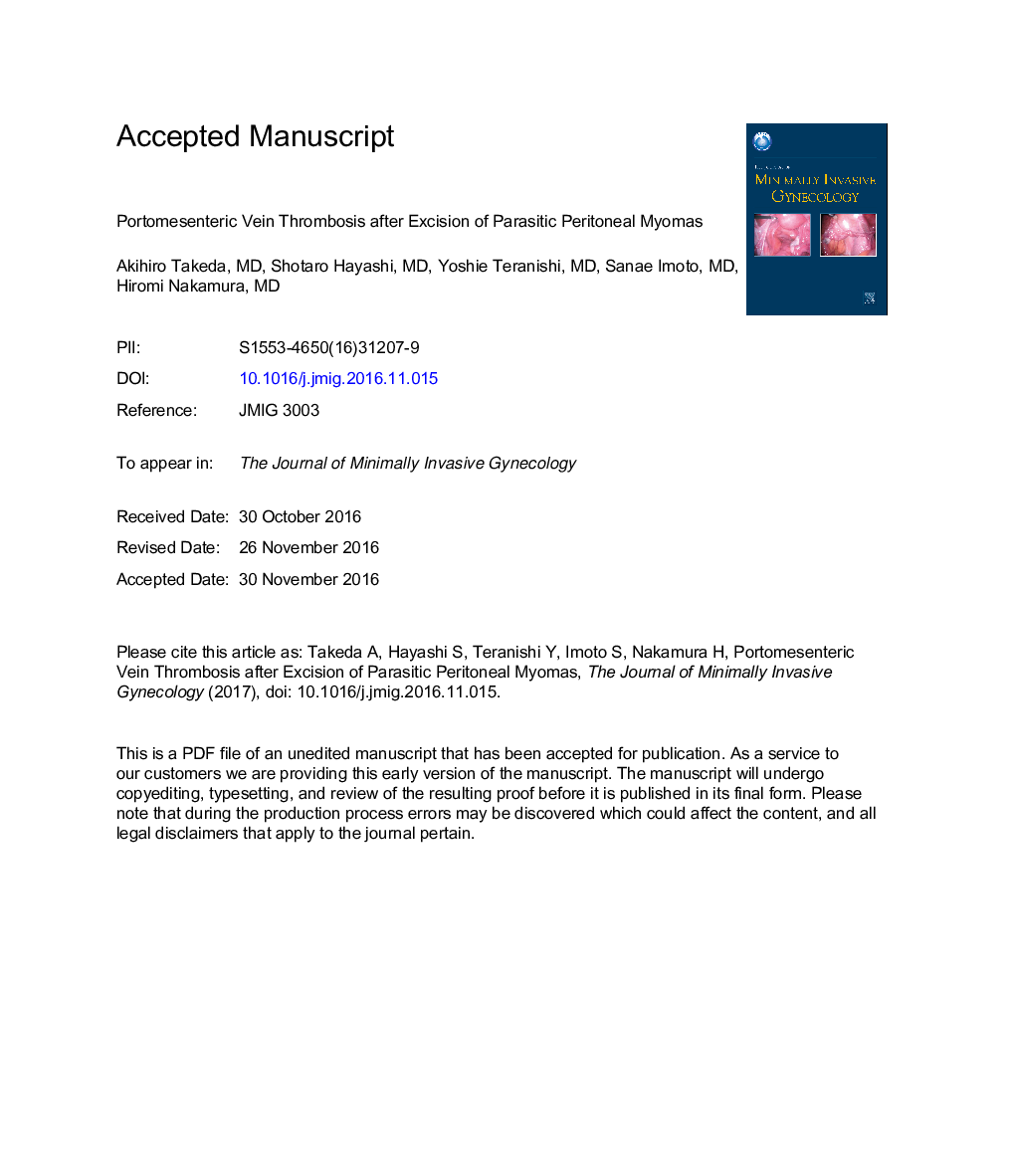| Article ID | Journal | Published Year | Pages | File Type |
|---|---|---|---|---|
| 5692381 | Journal of Minimally Invasive Gynecology | 2017 | 34 Pages |
Abstract
An enlargement of multiple asymptomatic pelvic masses was detected during a regular checkup of a 39-year-old woman. Twelve years earlier, she had undergone laparoscopic-assisted myomectomy, at which time an uncontained manual extraction of a posterior intramural myoma was performed. This was followed by 2 uneventful cesarean deliveries after spontaneous conceptions. Diagnostic imaging revealed at least 3 abdominal masses, 1 of which received its major blood supply from the inferior mesenteric artery. Gasless single-port laparoscopic excision of the peritoneal masses, was performed along with laparoscopic-assisted vaginal hysterectomy and bilateral salpingo- oophorectomy. The masses were histopathologically diagnosed as parasitic peritoneal myomas. The patient's immediate postoperative course was uneventful; however, on day 6 after surgery, she complained of severe periumbilical abdominal pain and vomiting. Anticoagulant therapy was initiated after hematologic examination revealed an elevated D-dimer level and dynamic computed tomography angiography showed portomesenteric vein thrombosis. Vaginal stump bleeding, which occurred 17Â days after the initiation of anticoagulant therapy, was managed conservatively, and there was no recurrence of venous thrombosis in the year after surgery. To avoid significant morbidities and potential mortality when parasitic peritoneal myomas with aberrant neovascularization are excised, attention should be given to the perioperative development of venous thromboembolic events in rare locations.
Keywords
Related Topics
Health Sciences
Medicine and Dentistry
Obstetrics, Gynecology and Women's Health
Authors
Akihiro MD, Shotaro MD, Yoshie MD, Sanae MD, Hiromi MD,
